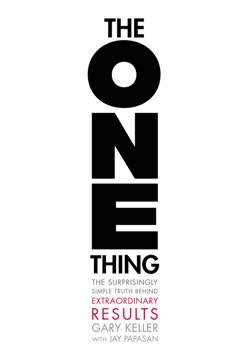가지 주요 요점
1. 무의식이 대부분의 행동을 주도한다
소비자의 사고의 95%가 무의식에서 이루어진다.
숨겨진 마음이 지배한다. 우리가 종종 통제하고 있다고 믿는 의식적인 마음은 실제로는 여정을 관찰하는 승객과 같다. 우리의 인식 아래에서 작동하는 무의식적인 마음이야말로 우리의 행동과 결정을 진정으로 주도하는 힘이다. 이 숨겨진 힘은 초당 1,100만 비트의 정보를 처리하는 반면, 우리의 의식적인 마음은 겨우 40비트를 처리한다.
마케터를 위한 시사점:
- 의식적인 자기 보고에 의존하는 전통적인 시장 조사는 종종 정확하지 않다
- 무의식적인 반응을 활용하는 신경 마케팅 기법은 더 깊은 소비자 통찰을 제공할 수 있다
- 효과적인 광고는 의식적 및 무의식적 수준 모두에 호소해야 한다
빙산 비유: 빙산처럼 우리의 정신 과정 중 소수만이 표면 위에 드러나 있다. 대다수는 숨겨져 있으며, 우리의 인식, 판단, 행동을 조용히 형성한다.
2. 우리는 소비자이기 전에 인간이다
마음을 조작하는 데 관심이 있다면 이 책을 읽지 마십시오.
"소비자"라는 꼬리표를 넘어서. 마케터들은 종종 청중을 단순히 소비자로만 보는 실수를 저지르며, 구매 결정 뒤에 있는 복잡한 인간을 잊는다. 이러한 좁은 초점은 행동을 진정으로 주도하는 더 깊은 동기, 본능, 보편적인 필요를 무시한다.
관점 전환:
- 일시적인 소비자 트렌드보다 인간 통찰에 집중하라
- 문화와 시대를 초월하는 인간 본성의 지속적인 진리를 이해하라
- 사람들의 목표는 제품을 소비하는 것이 아니라 자신의 필요를 충족시키는 것임을 인식하라
이 인간 중심 접근 방식을 채택함으로써 마케터들은 더 의미 있는 연결을 만들고, 더 깊은 수준에서 공감하는 제품과 메시지를 개발할 수 있다. 이 관점은 또한 사람들을 구매로 조작하는 대신 진정으로 삶을 개선하려는 더 윤리적인 마케팅 관행을 장려한다.
3. 우리의 뇌는 현대 소비주의가 아닌 석기 시대 생존을 위해 설계되었다
우리의 현대 두개골에는 석기 시대의 마음이 있다.
진화적 불일치. 첨단 기술과 현대적인 삶에도 불구하고, 우리의 뇌는 여전히 조상들의 진화적 압력에 의해 근본적으로 형성되어 있다. 인류 역사상 99% 이상 동안 우리는 수렵 채집 생활을 했으며, 우리의 인지 구조는 이 유산을 반영한다.
현대 세계에서의 석기 시대 본능:
- 고칼로리 음식에 대한 갈망 (한때 드물었지만 이제는 풍부함)
- 사회적 지위와 수용을 추구함
- 거절과 외부 위협에 대한 두려움
- 새로운 경험과 정보에 대한 매력
마케팅 시사점:
- 성공적인 브랜드는 종종 이러한 원초적인 본능을 활용한다
- 진화 심리학을 이해하면 소비자 행동에 대한 통찰을 제공할 수 있다
- 제품과 메시지는 우리의 진화적 과거에 뿌리박힌 깊은 필요를 충족하도록 설계될 수 있다
이 고대 뇌와 현대 환경 간의 불일치는 많은 비합리적인 소비자 행동을 설명하며, 마케터에게 도전과 기회를 모두 제공한다.
4. 감정이 논리보다 의사 결정의 주요 동인이다
우리는 생각하는 기계가 아니다. 우리는 감정을 느끼는 기계다.
감정의 우선성. 일반적인 믿음과 달리, 우리의 결정은 신중한 합리적 숙고의 결과가 아니다. 대신, 감정은 종종 우리의 의식적인 인식 없이 우리의 선택을 안내하는 중요한 역할을 한다.
의사 결정의 신경과학:
- 감정적 뇌(변연계)는 합리적 뇌(신피질)보다 정보를 더 빨리 처리한다
- 뇌의 감정 중심이 손상되면 의사 결정 능력이 심각하게 저하된다
- 감정은 우리에게 다양한 옵션에 가치를 부여하고 행동을 유도하는 데 도움을 준다
마케터를 위한 시사점:
- 소비자와의 감정적 연결을 만드는 데 집중하라
- 스토리텔링과 감각적 경험을 사용하여 원하는 감정을 불러일으키라
- 합리적인 논쟁만으로는 행동을 변화시키기에 충분하지 않음을 인식하라
논리적 논쟁과 제품 기능이 그 자리를 차지할 수 있지만, 의사 결정의 감정적 동인을 활용하는 것이 종종 성공적인 마케팅과 브랜드 구축의 열쇠이다.
5. 브랜드는 깊이 자리 잡은 인간의 필요와 본능을 활용하여 성공한다
브랜드는 새로운 종교다.
기능과 혜택을 넘어서. 가장 강력한 브랜드는 단순히 제품을 판매하는 것이 아니라, 근본적인 인간의 욕구를 활용하고 의미와 소속감을 창출한다.
브랜드가 해결할 수 있는 보편적인 인간의 필요:
- 사회적 연결과 수용
- 지위와 자존감
- 안전과 편안함
- 개인 성장과 자기 실현
- 흥분과 새로움
인간 본능을 활용하는 브랜드의 예:
- 애플: 창의성, 개성, 지위
- 나이키: 성취, 자기 개선, 부족 소속감
- 코카콜라: 행복, 사회적 연결, 향수
이러한 깊이 자리 잡은 필요와 일치함으로써, 브랜드는 충성스러운 팔로워를 만들고 단순한 제품 카테고리를 초월할 수 있다. 이 접근 방식은 일부 브랜드가 고객들 사이에서 거의 종교적인 헌신을 불러일으키는 이유를 설명한다.
6. 효과적인 마케팅은 감정적 및 합리적 마음 모두에 호소한다
마케터는 제품이나 서비스를 판매하는 것이 아니라 감정 상태를 판매하는 사업에 종사한다.
마음과 머리의 균형. 감정이 주요 동인이지만, 합리적인 마음도 의사 결정에서 중요한 역할을 한다. 효과적인 마케팅은 지속적인 영향을 미치고 행동 변화를 유도하기 위해 두 시스템 모두를 참여시켜야 한다.
설득의 이중 과정 모델:
- 감정적 호소: 욕구와 긍정적인 연관성 창출
- 합리적 정당화: 감정적 결정을 뒷받침하는 논리적 이유 제공
두 마음을 참여시키는 전략:
- 감정적 스토리텔링으로 시작하고, 사실적 지원으로 이어지라
- 생생한 이미지와 은유를 사용하여 논리적 주장을 더 설득력 있게 만들라
- 제품/서비스의 열망적 및 실용적 혜택을 모두 제공하라
의사 결정의 감정적 및 합리적 측면을 모두 다룸으로써, 마케터는 소비자에게 여러 수준에서 공감하는 더 설득력 있고 기억에 남는 캠페인을 만들 수 있다.
7. 강력한 경험을 창출하는 것이 강력한 브랜드 연관성을 구축하는 열쇠이다
브랜드는 화려한 공작 꼬리와 같다.
정보보다 경험. 오늘날의 혼잡한 미디어 환경에서 단순히 브랜드에 대한 정보를 방송하는 것은 종종 충분하지 않다. 몰입형, 다감각적 경험을 창출하는 것이 훨씬 더 강력하고 지속적인 브랜드 연관성을 형성할 수 있다.
강력한 브랜드 경험의 요소:
- 여러 감각을 참여시키라 (시각, 청각, 촉각, 미각, 후각)
- 강한 감정을 불러일으키라 (기쁨, 흥분, 경외 등)
- 적극적인 참여와 사회적 상호작용을 장려하라
- 기억에 남는 "절정" 순간과 긍정적인 결말을 창출하라
경험 중심의 브랜딩 예:
- 레드불: 극한 스포츠 이벤트 후원
- 스타벅스: 집과 직장 사이의 "제3의 장소" 창출
- 디즈니: 몰입형 테마파크 경험
이러한 경험은 전통적인 광고를 넘어 깊은 감정적 연결과 브랜드와 관련된 지속적인 기억을 창출한다. 다감각적이고 감정적으로 충전된 이벤트를 통해 뇌의 강한 신경 연결을 형성하는 경향을 활용한다.
8. 행동을 취하는 것이 행동 변화를 유도하고 브랜드 충성도를 강화하는 데 중요하다
말하면 잊어버리고, 보여주면 기억할 수도 있지만, 참여시키면 이해하게 된다.
행동이 변화를 유도한다. 인식과 긍정적인 연관성이 중요하지만, 진정한 행동 변화와 브랜드 충성도는 제품이나 서비스와의 반복적인 행동과 경험을 통해 강화된다.
행동의 심리학:
- 신체적 행동은 수동적인 관찰보다 더 많은 뇌를 참여시킨다
- 반복은 신경 경로를 강화하여 행동을 자동화한다
- 행동을 취하는 것은 인지 부조화를 초래하여 행동과 일치하도록 태도 변화를 유도할 수 있다
행동을 장려하는 전략:
- 초기 사용 장벽을 낮추기 위해 무료 체험 및 샘플을 제공하라
- 브랜드와의 실질적인 참여를 허용하는 인터랙티브 경험을 창출하라
- 반복적인 행동과 구매를 보상하는 로열티 프로그램을 개발하라
- 사회적 증거와 동료의 영향을 사용하여 원하는 행동을 정상화하라
정보를 단순히 흡수하는 것보다 행동을 취하는 데 중점을 둠으로써, 마케터는 행동의 더 지속적인 변화를 만들고 더 강력한 브랜드 관계를 형성할 수 있다. 이 행동 지향적 접근 방식은 인간이 정보의 수동적 수용자보다 "행동하는 자"임을 인식한다.
마지막 업데이트 날짜:
FAQ
What's Unconscious Branding about?
- Unconscious decision-making: The book explores how most consumer decisions are made unconsciously, challenging the assumption that consumers are fully aware of their choices.
- Neuroscience integration: Douglas Van Praet combines insights from neuroscience with marketing strategies to enhance marketing effectiveness.
- Human behavior focus: It emphasizes viewing consumers as humans with emotions and instincts, rather than just statistics.
Why should I read Unconscious Branding?
- Revolutionary insights: Offers a fresh perspective on consumer behavior, highlighting the unconscious mind's role in decision-making.
- Practical strategies: Provides actionable strategies for marketers to connect with consumers on a deeper emotional level.
- Science and practice bridge: Integrates neuroscience with marketing, equipping readers to influence consumer behavior effectively.
What are the key takeaways of Unconscious Branding?
- Two minds concept: Introduces the idea that humans operate from two cognitive systems—the conscious and the unconscious.
- Seven steps to change: Outlines a seven-step process for changing consumer behavior, including interrupting patterns and creating comfort.
- Emotional connection: Stresses that successful marketing must engage consumers emotionally, as feelings drive decisions more than rational thought.
What are the best quotes from Unconscious Branding and what do they mean?
- Einstein's insight: “The rational mind is the humble servant, the intuitive mind the faithful gift.” Emphasizes the importance of intuition and emotion in decision-making.
- Jung's perspective: “Until you make the unconscious conscious, it will direct your life and you will call it fate.” Highlights the significance of understanding unconscious motivations.
- Damasio's message: “We are feeling machines that think.” Captures the book's core message that emotions play a fundamental role in decision-making.
How does Unconscious Branding define the unconscious mind's role in consumer behavior?
- Influence on decisions: The unconscious mind significantly influences consumer decisions, often without awareness.
- Emotional triggers: Emotional triggers processed unconsciously shape consumer preferences.
- Neural pathways: Repeated exposure to stimuli creates strong neural pathways, influencing brand perception.
What is the seven-step process for behavior change in Unconscious Branding?
- Interrupt the Pattern: Capture attention by doing something unexpected to break habitual thought processes.
- Create Comfort: Establish safety and familiarity to make consumers receptive to new ideas.
- Lead the Imagination: Encourage consumers to envision product benefits, stimulating desire for change.
How can marketers apply the concepts from Unconscious Branding?
- Emotional connections: Prioritize creating emotional bonds with consumers to drive loyalty and purchasing decisions.
- Pattern interrupts: Implement strategies that disrupt habitual thought patterns to capture attention.
- Neuroscience insights: Use neuroscience findings to ensure campaigns resonate on both conscious and unconscious levels.
What role does neuroscience play in Unconscious Branding?
- Understanding the brain: Explains how the brain processes information and makes decisions, emphasizing the unconscious mind.
- Behavioral insights: Provides insights from cognitive science and neurobiology to create effective strategies.
- Emotional engagement: Supports the idea that emotional engagement is crucial for influencing consumer behavior.
How does Unconscious Branding suggest marketers create comfort for consumers?
- Establish familiarity: Create a sense of familiarity and safety in messaging to ease consumer anxiety.
- Build trust: Foster trust through transparency and authenticity, making consumers comfortable with purchasing decisions.
- Reduce anxiety: Address potential concerns and provide reassurance to make consumers more receptive.
How can brands effectively change consumer associations according to Unconscious Branding?
- Reframing narratives: Change consumer associations by reframing brand narratives to align with desired perceptions.
- Celebrity endorsements: Use celebrity endorsements to influence perceptions and enhance brand image.
- Positive experiences: Create positive experiences that reinforce desired associations, reshaping consumer perceptions.
What are some practical applications of the concepts in Unconscious Branding?
- Marketing strategies: Apply the seven steps to develop comprehensive strategies that engage consumers on multiple levels.
- Customer experiences: Focus on creating memorable experiences that resonate emotionally, increasing loyalty.
- Neuroscience insights: Craft messages that resonate deeply by using emotional triggers and appealing to both rational and emotional aspects.
What is the significance of pattern interruption in marketing according to Unconscious Branding?
- Captures attention: Crucial for breaking through everyday marketing noise and grabbing attention.
- Stimulates curiosity: Piques curiosity by presenting something unexpected, encouraging engagement.
- Facilitates behavior change: Leads to new behaviors, making consumers more open to trying new products.
리뷰
Unconscious Branding은 평균 평점 5점 만점에 3.92점을 받으며 다양한 평가를 받고 있다. 많은 독자들은 이 책이 신경과학, 소비자 행동, 마케팅 전략에 대한 유익한 정보를 제공한다고 생각한다. 이 책은 사고를 자극하는 내용과 실제 사례로 찬사를 받고 있다. 일부 독자들은 이 책이 비즈니스와 개인 생활 모두에 적용 가능하다는 점을 높이 평가한다. 그러나 비평가들은 정보가 구식이거나 조작적일 수 있다고 주장하며, 일부는 기술적인 언어가 어렵다고 느낀다. 전반적으로, 마케팅, 심리학, 소비자 행동에 관심이 있는 사람들에게 추천된다.
Similar Books














